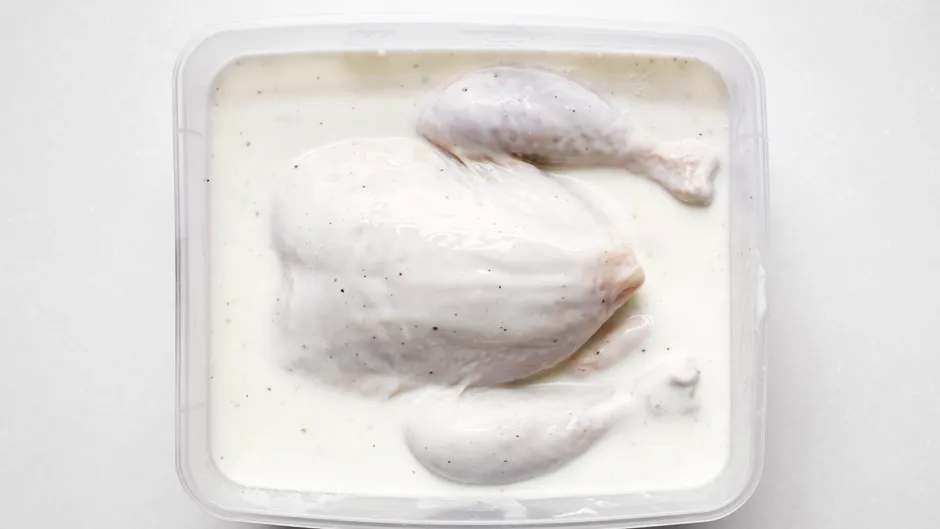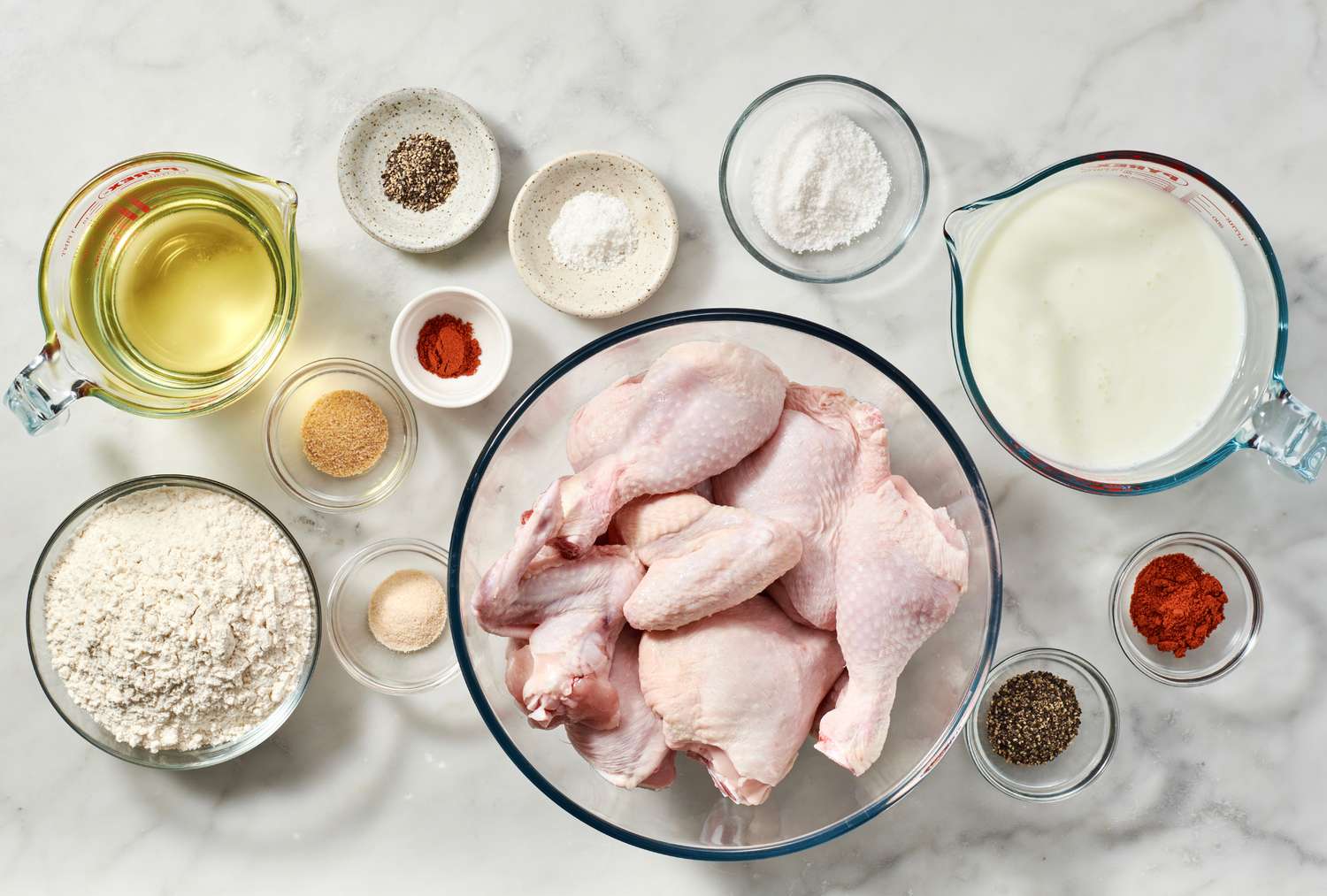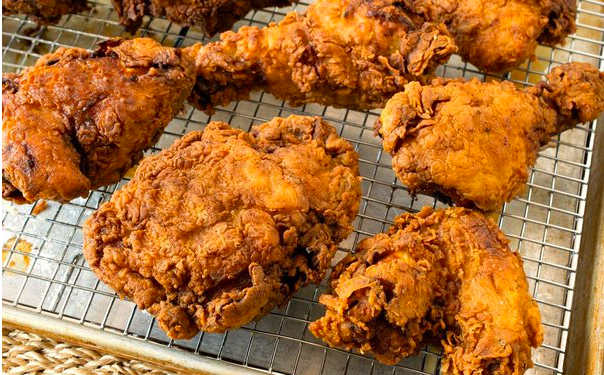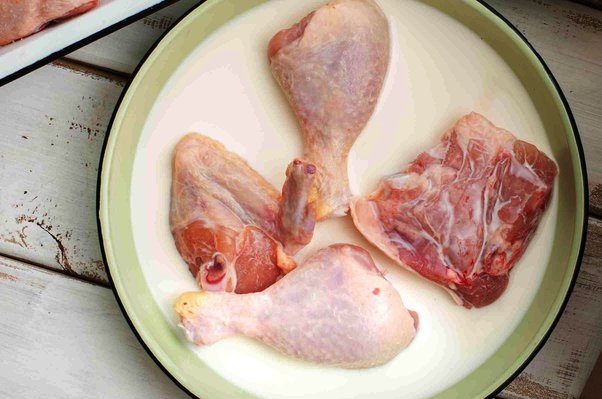When it comes to cooking, especially with ingredients like chicken, food safety is paramount. One common practice is to use buttermilk as a marinade for chicken, which helps tenderize the meat and adds flavor. However, a question often arises: can you reuse buttermilk that has already been in contact with raw chicken for a new batch?
While it might seem like a convenient way to save resources, this practice carries significant food safety risks. Let’s delve into why reusing buttermilk in this way can be problematic and how to handle it safely.
Reusing buttermilk that previously contained raw chicken poses a significant food safety risk. Here’s why:

Cross-Contamination Risk:
Raw chicken can carry harmful bacteria like Salmonella or Campylobacter. When you use buttermilk that has been in contact with raw chicken, it can be contaminated with these bacteria.
If you reuse this contaminated buttermilk for a new batch of raw chicken, you’re increasing the risk of cross-contamination. The new batch of chicken can pick up these harmful bacteria, which can then lead to foodborne illness if not cooked properly.
Proper Cooking Temperature:
Even though cooking the chicken should kill most bacteria, there is still a risk if the contamination is high. Ensuring that both the buttermilk and the chicken are handled safely and cooked to the correct temperature (165°F or 74°C) is crucial. However, the safest route is to avoid the risk of contamination in the first place.
Food Safety Guidelines:
Food safety guidelines recommend avoiding the reuse of marinades or buttermilk that has been in contact with raw poultry without proper cooking or reprocessing.
This is because the bacteria present in raw poultry can multiply quickly in a marinade or buttermilk, and just using it for a new batch doesn’t eliminate the risk of foodborne illness.
Best Practices for Handling Buttermilk and Raw Chicken

Use Fresh Buttermilk: Always start with a fresh batch of buttermilk for marinating raw chicken. This helps avoid the risk of cross-contamination from bacteria that might have been introduced by the raw poultry. Fresh buttermilk ensures that the marinade remains free of harmful pathogens that could compromise food safety.
Avoid Reusing Marinades: Do not reuse buttermilk or any other marinade that has been in contact with raw chicken. Once the marinade has been exposed to raw poultry, it can be contaminated with harmful bacteria. Discard the used marinade and start with a new batch for each new batch of chicken.
Cook to the Right Temperature: Ensure that the chicken is cooked to a safe internal temperature of 165°F (74°C). This temperature is critical for killing harmful bacteria that might be present. Use a food thermometer to accurately measure the temperature at the thickest part of the chicken.
Sanitize Properly: After handling raw chicken and buttermilk, thoroughly clean and sanitize all utensils, bowls, and surfaces that came into contact with the raw ingredients. Use hot, soapy water to wash these items, followed by a sanitizing solution if necessary. This helps prevent cross-contamination to other foods and surfaces.

Store Buttermilk Correctly: Keep buttermilk refrigerated at or below 40°F (4°C) to prevent bacterial growth. Ensure it is properly sealed and stored in its original container or an airtight container to maintain its freshness and prevent contamination.
Marinate Safely: If you need to marinate chicken, do so in the refrigerator rather than at room temperature. Marinating at room temperature can allow bacteria to grow rapidly. Also, use a covered container or resealable plastic bag to prevent leaks and cross-contamination.
Use Separate Utensils: Always use separate utensils for handling raw chicken and other foods. For example, use different cutting boards and knives for raw poultry and vegetables to avoid transferring bacteria.
Dispose of Used Buttermilk: Once you have used buttermilk for marinating raw chicken, dispose of it properly. Do not pour it down the sink or reuse it for any other purpose. Ensure that disposal methods comply with your local waste management guidelines.

Practice Good Personal Hygiene: Wash your hands thoroughly with soap and water before and after handling raw chicken and buttermilk. Proper hand hygiene is a fundamental aspect of preventing the spread of harmful bacteria.
By following these best practices, you’ll not only maintain high standards of food safety but also ensure that your meals are both delicious and safe to eat.
In summary, while reusing buttermilk that has been in contact with raw chicken might seem like an efficient choice, it poses considerable food safety risks.
The main concern is the potential for cross-contamination with harmful bacteria, which can lead to foodborne illnesses if not handled properly. For the sake of safety and to ensure a delicious outcome, it’s best to use fresh buttermilk for each batch of chicken and follow proper food handling guidelines.
By adhering to these practices, you’ll not only safeguard your health but also enhance the quality of your meals.

